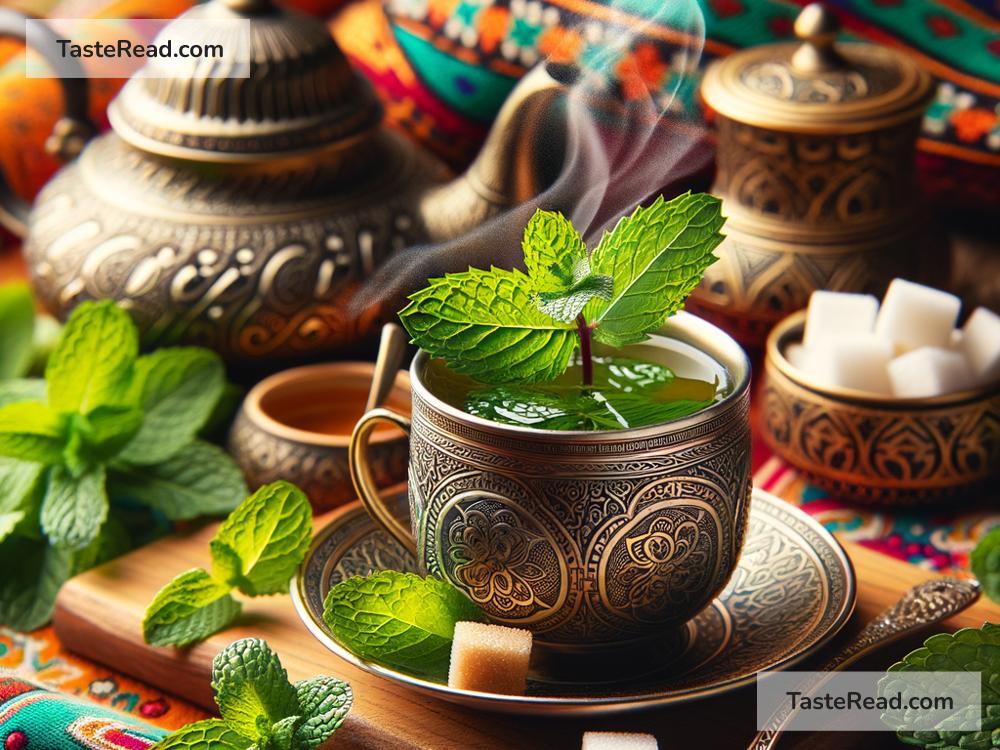The Curious Story of Mint in Middle Eastern Teas
Tea is one of the most loved drinks in the Middle East. It is not just a beverage; it’s a cultural ritual, a sign of hospitality, and often a moment of peace. If you’ve ever sipped tea in a Middle Eastern home or café, you’ve probably noticed a special ingredient: fresh mint. Mint is an essential part of the tea-drinking experience in this vibrant region, and its story is as fascinating as it is refreshing.
Why Is Tea Important in the Middle East?
To understand the role of mint, we first need to talk about tea. In the Middle Eastern culture, tea isn’t just served—it’s celebrated. Friends and family gather around steaming cups of tea to talk, relax, and connect. Guests are immediately offered tea as a way to show respect and kindness. No matter the occasion, tea holds a special place in people’s hearts.
But it’s not just about pouring boiling water over tea leaves. Tea in the Middle East is an art form. The flavors, the preparation methods, and even how the tea is served change from country to country. Some countries prefer black tea, while others enjoy green tea. But one thing remains consistent in many regions: mint.
Why Mint?
Mint has been used for centuries, not only for its refreshing taste but also for its health benefits. In ancient times, people believed mint could cure digestive problems and calm nerves. Its soothing aroma and cool flavor made it an ideal pairing with tea.
Adding mint also balances the bitterness of strong teas. In many Middle Eastern homes, tea is brewed strong, especially black tea, which can have a bold, earthy flavor. Fresh mint softens that earthiness, creating a delightful contrast between the robustness of the tea and the crisp, cooling sensation of mint leaves.
But there’s more to mint than just taste. Mint has symbolic meaning in Middle Eastern culture. It represents freshness, life, and hospitality. Serving mint tea to guests is a way to offer warmth and goodwill, making it more than just a drink—it’s a gesture of care.
A Tradition Across Many Countries
Mint tea is deeply rooted in the traditions of several Middle Eastern countries, each adding its own unique touch to the drink.
Morocco: The King of Mint Tea
Morocco is famous for its mint tea, known as “Moroccan mint tea” or “Maghrebi tea.” In Morocco, tea is not just an ordinary drink—it’s a ceremony. The tea is made from Chinese green tea, fresh mint leaves, and a generous amount of sugar. Moroccans believe that the tea should be as sweet as life and as strong as love.
Preparing Moroccan mint tea is an art. Hot water is poured over the green tea to remove its bitterness, then the tea is brewed with sugar and fresh mint. The way the tea is poured is also special. Hosts pour the tea from a teapot held high above the glass, creating bubbles on the surface. It’s a skill that’s admired and practiced across the country.
Egypt: Sip Slowly
In Egypt, mint is also a popular addition to tea. Egyptians mostly enjoy black tea, and fresh mint leaves help lighten its strong, bold flavor. Many drink their tea after meals because mint aids digestion, making it the perfect ending to the day’s feasts. While the tea in Egypt may not have the bubbly presentation of Moroccan tea, it’s still served with great care.
Lebanon and Jordan: A Simple Delicacy
Lebanese and Jordanian tea rituals are straightforward but equally rich in tradition. People boil black tea leaves with sugar and add fresh mint toward the end of the brewing process. The drink is served in small glasses, allowing the vibrant green of the mint to shine against the dark tea. In these countries, tea is often enjoyed alongside fresh fruit, pastries, or nuts.
The Beautiful Role of Mint in Daily Life
Mint tea is more than a recipe or ingredient—it’s a lifestyle. In the hustle and bustle of daily life, tea with mint offers moments of comfort. Imagine sitting in a small courtyard, the heat of the day melting into the cool breeze as you sip on a glass of tea infused with mint. It’s a small ritual that brings calmness and joy.
Mint also symbolizes the connection between people. In Middle Eastern cultures, tea is rarely drunk alone. It’s shared with loved ones, friends, and visitors. Adding mint signifies the effort and care put into creating a drink that brings happiness to everyone gathered.
Health Benefits of Mint in Tea
Mint tea isn’t just delicious; it’s good for you too. Mint is known for its ability to help with digestion, making it a perfect choice after a heavy meal. It can also ease headaches, reduce stress, and improve focus. Pairing it with tea creates a healthy, soothing drink.
Conclusion
The story of mint in Middle Eastern teas is both fascinating and heartwarming. It’s more than a culinary choice—it’s a blend of culture, tradition, and love. The refreshing taste of mint adds a layer of meaning to tea that goes beyond flavor. It brings people together, promotes health, and symbolizes the care and hospitality so central to Middle Eastern values.
So next time you sip a cup of mint tea, take a moment to think about its journey. This simple garnish is a reminder of the rich history and deep cultural significance that makes Middle Eastern tea traditions so special.


